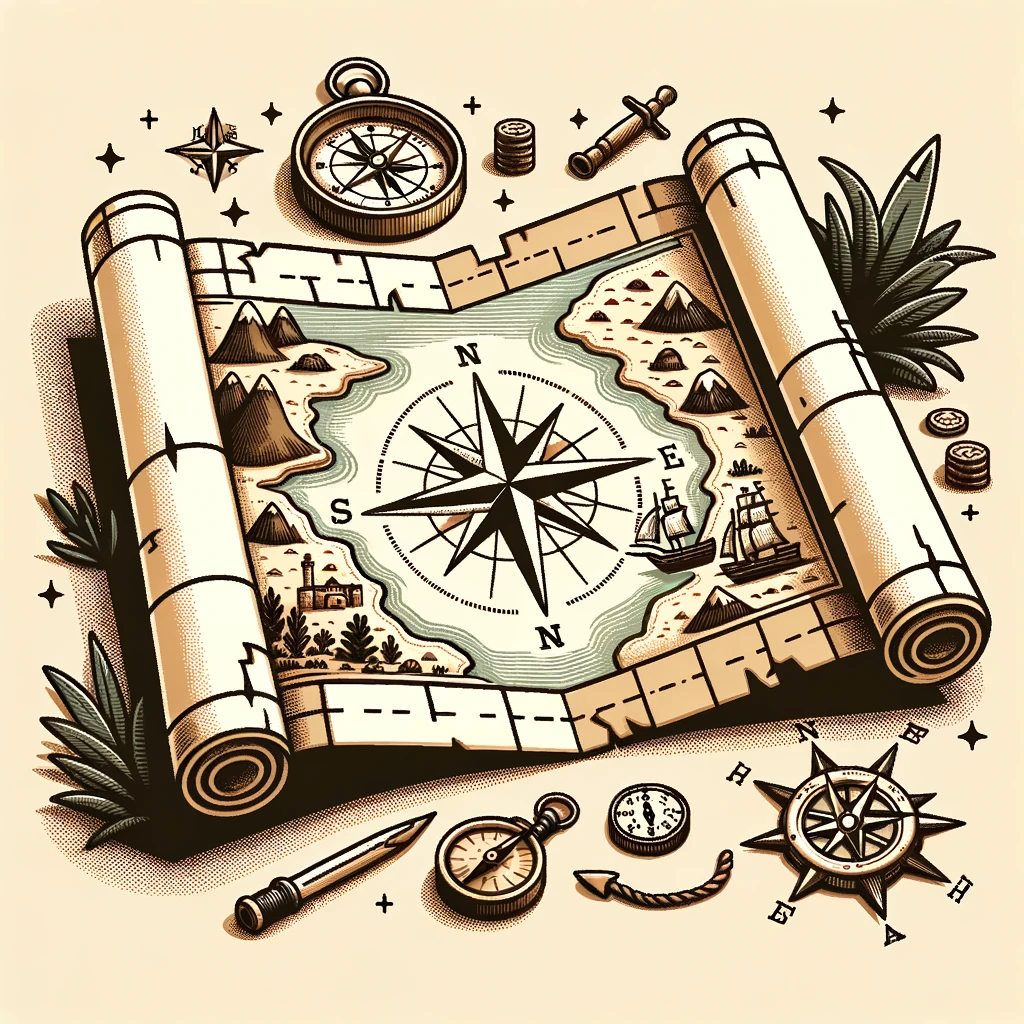Artificial Intelligence: A Beacon for Language Preservation Projects
In an era where technology is rapidly reshaping every aspect of human life, the realm of linguistic diversity has found a new ally in Artificial Intelligence (AI). Languages, as the bedrock of cultural identity, are facing an unprecedented threat of extinction. It is estimated that a language disappears every two weeks, leaving a linguistic heritage irretrievably lost. However, AI is emerging as a potent force in the fight to safeguard and revitalize these vulnerable tongues. Through cutting-edge technologies, AI is aiding efforts to document, preserve, and even revive languages that are teetering on the brink of disappearance.
How AI Contributes to Language Preservation
AI’s integration into language preservation projects is multifaceted. From automating documentation to developing interactive language learning tools, AI technologies offer innovative solutions that were previously unimaginable. Here is a breakdown of key areas where AI is making a significant impact:
Speech Recognition Technology: AI systems equipped with speech recognition capabilities can analyze and transcribe audio recordings of endangered languages. This process not only helps in creating a digital repository but also ensures that the phonetic intricacies are meticulously captured.
Machine Translation and Deep Learning: Advanced algorithms are deployed to translate and interpret lesser-known languages into more widely spoken ones, thus expanding their reach and accessibility. This is achieved through sophisticated neural networks that learn and adapt over time.
Natural Language Processing (NLP): By leveraging NLP, AI can process and understand linguistic patterns, enabling the development of resources such as dictionaries and grammar guides. This empowers native speakers and learners alike to engage with the language more effectively.
Case Studies: Success Stories in Action
The collaborative efforts between technologists and linguists have led to a number of success stories, showcasing how AI can breathe new life into endangered languages. Below, we explore a few noteworthy examples:
Language
Project
Outcome
Te Reo Māori
Chatbot Development
Increased engagement and learning resources in Te Reo Māori
Kichwa
Automated Speech Recognition
Improved documentation processes and community involvement
Inuit Languages
Machine Translation Tools
Enhanced access to translated materials for educational endeavors
Challenges and Future Directions
While the potential of AI in language preservation is vast, it is not without its challenges. One primary issue lies in the quality of data available. Many endangered languages lack sufficient digital and audio records, posing a hurdle for AI algorithms that require massive datasets to function optimally. Furthermore, ethical considerations regarding the ownership and control of linguistic data must be navigated carefully, ensuring that indigenous communities have a say in how their languages are digitized and distributed. To truly harness AI’s power in language preservation, ongoing collaboration and innovation are essential.
Looking Ahead: The Road to Sustainable Language Preservation
As we look to the future, the integration of AI in language preservation efforts holds promising prospects. The path forward requires a commitment to not only develop technologically advanced tools but also to foster community involvement and advocate for policies that support linguistic diversity. By bridging the gap between technology and tradition, AI can become a catalyst for not just preserving languages, but revitalizing them, ensuring their survival for generations to come. As such, exploring the role of AI in language preservation leads us to consider…
The Role of AI in Language Preservation
Language serves as the **backbone of culture and identity**, but an alarming number of languages are facing extinction. Many languages are in critical “endangered” status, and more vanish each year. However, technological advancements in artificial intelligence (AI) are turning the tide, providing tools not just to document but to revive these invaluable tongues. As seen in various global initiatives, AI could potentially hold the key to preserving linguistic diversity.
Core Initiatives Leveraging AI
AI-powered tools are emerging as innovative solutions in language preservation, **bridging technology with tradition**. Here’s a look at how AI is being employed to bring about a renaissance of languages once deemed lost:
Data Collection & Documentation: AI excels in data processing. Machine learning algorithms can evaluate syntax and semantics from massive datasets, creating comprehensive databases for endangered languages.
Text-to-Speech and Speech Recognition: Existing lexical data is turned into spoken word through AI, ideal for preserving oral histories. Machine learning models can also decode and transcribe audio into textual data, aiding in documentation.
Language Revival Apps: AI is utilized in developing apps that allow users to learn and interact with endangered languages through real-time feedback and adaptive learning pathways.
Chatbots and Virtual Tutors: AI-powered chat platforms aid language practice, using **natural language processing (NLP)** to foster interaction across language barriers.
Notable Case Studies
To gain a deeper understanding of AI’s transformative role in language preservation, let’s explore some notable projects embracing cutting-edge technology:
Wikitongues: Utilizing AI to document and curate multiple language samples, Wikitongues creates a community-driven library for learning purposes.
Endangered Languages Project (ELP): This project uses AI to **map language distribution** and analyze the interconnections between linguistic features, offering digital resources and tools for language revitalization.
Challenges and Innovative Solutions
Despite AI’s potential, challenges remain, primarily driven by **data scarcity**, limited computational resources, and the complexity of different languages. Here’s how these challenges are being navigated:
Challenge
Solution
Data Scarcity
**Data augmentation** techniques and partnerships with native speakers to gather comprehensive language data.
Technical Constraints
Utilization of **cloud computing** and more efficient algorithms that manage computation needs effectively.
**Cross-disciplinary collaborations** among linguists, technologists, and communities are pivotal. AI can learn better through engagements and repetitive tasks guided by language experts who understand the nuance and intricacies of endangered languages.
The Promising Future
The future of language preservation using AI looks promising. Considering its rapid advancement, AI holds the potential to develop increasingly sophisticated tools that can simulate language nuances. Imagine wearable devices powered by AI that can facilitate real-time translations or offer language learning on the go. By embracing such technological advancements, we are likely to preserve linguistic heritage and cultural identity for future generations.
The Role of AI in Accelerating Language Preservation Initiatives
**Artificial Intelligence (AI)** has emerged as a crucial ally in the quest to preserve endangered languages. Building on the foundational capabilities discussed in previous sections, it’s clear that AI’s involvement goes beyond mere documentation—it actively enhances both the preservation and revitalization processes. By leveraging AI’s **machine learning algorithms** and **natural language processing (NLP)** capabilities, language preservation efforts can be significantly accelerated.
Machine Learning for Real-time Transcription and Translation
**Automated Transcription**: AI tools can now transcribe spoken words into text with remarkable accuracy. This is essential for languages with oral traditions, where written records are virtually nonexistent.
**Real-time Translation**: Utilizing neural networks, AI platforms provide instant translations, which can help bridge communication gaps between different linguistic communities and promote language learning.
**Contextual Understanding**: Advanced models are designed to capture both linguistic and cultural nuances, ensuring translations are true to authentic meanings and not just literal interpretations.
Digital Archiving and Accessibility Initiatives
AI acts as a diligent librarian, organizing and archiving vast amounts of linguistic data. **Smart databases**, powered by AI, enhance resource accessibility, ensuring users—from researchers to community members—can effortlessly retrieve information.
**Metadata Tagging**: AI algorithms meticulously tag data, enabling enhanced searchability within digital archives. This facilitates easier retrieval of language resources across diverse formats.
**Interactive Language Apps**: AI-driven applications provide interactive tutorials and exercises that make language learning engaging and effective, encouraging new generations to embrace and use endangered languages.
The Future Implications of AI in Language Preservation
The future landscape of language preservation, with AI as a cornerstone, promises a **comprehensive digital ecosystem** where languages thrive both in digital form and within their native communities. Future innovations might include:
**Advanced Speech Recognition**: Evolving AI models will cater to subtle dialect variations, enabling even the smallest language communities to have their voices heard.
**Virtual Reality (VR) and Augmented Reality (AR) in Language Education**: Immersive environments can be crafted to provide learners with contextual language experiences, enriching the learning process beyond conventional teaching methods.
**Collaborative Platforms**: AI will drive the development of platforms where enthusiasts and experts converge, share insights, and collaboratively contribute to language databases.
Ethical Considerations in AI Integration
As AI’s footprint in language preservation grows, it is integral to address potential ethical implications. These considerations include **ensuring data privacy**, gaining community consent, and preventing the potential misuse of cultural information. Establishing guidelines and ethical frameworks for AI applications will protect the interests of indigenous and local communities.
Conclusion
AI’s impact on language preservation is profound, offering innovative solutions to longstanding challenges. By harnessing its capabilities, we can foster rejuvenation within communities whose languages are endangered. The future holds immense promise with AI continuing to evolve, offering new methods of integration and engagement.
Action Items for Language Preservation Projects
Action Item
Description
Priority Level
**Implement AI Tools**
Integrate AI software for transcription, translation, and archiving within language preservation initiatives.
High
**Build Collaborative Platforms**
Create online spaces for linguists and native speakers to share resources and knowledge.
Medium
**Develop VR/AR Learning Modules**
Invest in immersive technology to provide learners with engaging language experiences.
Low
**Establish Ethical Guidelines**
Formulate ethical protocols to oversee AI’s role in community data protection and cultural sensitivity.
High




